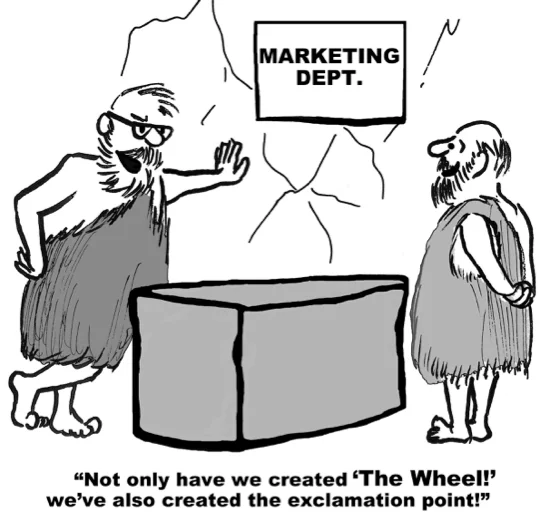How to Implement an LMS, Part 6: Roll-out Planning and Configuration

In this sixth article on the series of How to Implement an LMS, I’ll be diving into the details of the roll-out planning process. This is where the rubber really meets the road in your LMS implementation. It is also where failure is most likely to occur, and I’ll explain why. Get a free consultation on how to implement a learning management system.
In spite of all the work you’ve done leading up to this point to lay a solid foundation, conduct extensive organizational analyses to clearly lay out what you need an LMS to deliver, sift through the hundreds of options to make your final LMS vendor selection, and negotiate the best contract possible, it is all for naught if you don’t view the implementation of your LMS as a major change project initiative. Here’s what you’ve got to do to experience success in this phase: PLAN!
LMS Implementation Project Team
Begin by forming a stellar change project leadership and management team. That team will create the master implementation project plan, including a solid timeline with milestones all the way to completion. You’ll also want to have your vendor submit an implementation plan and then ensure the two match up well, making any needed adjustments to ensure smooth and efficient progress towards the goal. You can also ask your vendor for a project plan template as a starting point and make changes to it as needed to suit your project and company.
Who should be on this LMS Implementation Project Team? Let’s go back to the recommendations I presented earlier in the LMS analysis phase of who should have been on that team: A Human Performance Technology/Organizational Development Expert for putting together the different evaluation and assessment tools, HR, IT, Training/Learning, Management (for authority to approve plans and budgets), and legal/risk management. You could drop the legal representative for the implementation team, but it would be good to have all the others on this team. Most important of all, make sure at least one (and preferably two) of the team members are well-versed in leading, facilitating, and managing change projects. That’s the person who should be leading this team (or co-chairing it if there are two change experts on board). It would also be good to add in someone from communications and/or marketing because you’ll need very targeted efforts to promote adoption of the LMS among all your departments and employees.

Implementation Strategy and Timeline
Depending on the size of your company, you may roll out the Learning Management System implementation in a particular sequence among your different departments or units. This bears some careful thought and discussion among the members of the team. Don’t choose the most resistant areas for first implementations! You want to gain some early wins and have those people talking about how great the new system is. Come to a consensus about who’s going to be on-boarded into the new system first and why. It’s typical for each person on the team to take ownership of some particular aspect of the LMS for administrative purposes. Such areas might include installation/testing, training on the new system, content creation/management, reporting/data, marketing/communication, and so on. You want to distribute the different responsibilities identified as evenly and widely as possible among team members in order to keep all aspects moving forward in a timely and efficient manner. Make your timelines very clear in terms of what is supposed to happen by when and by whom. Responsibility and accountability need to be clearly assigned so there is no room for doubt. Make sure you build in time for problem-solving when issues and challenges arise, as they inevitably will. Fluid and flexible is the name of this game. As a general rule of thumb, on-premise implementations can take anywhere from 6-9 months while cloud-based implementation range from 3-9 months (obviously dependent on the size of your company).
LMS Configuration
You’ll need to make a host of different configuration decisions related to your data and operations, as well as the system’s functionality and capabilities, such as the following:
- User profiles. What user demographic data do you need? Possibilities include name, contact information, job function, employment status, the length of tenure, hire date, and anything else you think might be useful. Much of this information exists somewhere in your organization already, and it’s a matter of getting it into the LMS. The more detail brought in from the beginning, the more flexibility you’ll have to do what you need to do, and make changes along the way.
- Domains and audiences. You may identify major groupings of users that need entirely different points of access, such as employees versus customers, or employees by region or major function. If you need to keep different groups entirely separate, it’s like running multiple LMS installations from just one. This makes it easy to assign training and learning initiatives to the correct groups who need it. In fact, the course offerings for each domain and audience may be entirely different from one another.
- Administrator roles and permissions. I mentioned earlier that different team members may be responsible for different aspects of LMS administration, and you’ll need to set up what areas they can access within their particular roles.
- Course listings and metadata. The metadata is a set of descriptors for each course, and your course catalog or listing is how users will access what’s available. Think through the different properties of courses that make sense for how users will access different kinds of courses – maybe by delivery type, the language used, and so on.
- Structure for courses and curriculum. Each course may have any number of different learning activities that need to happen in sequence, while various courses may fit into an overall curriculum or program of study that also needs to happen in sequence (such as progressing from basic courses to more advanced courses). This can’t be fully accomplished until your data and content are migrated into the system. But you can at least create “dummy” courses to help you figure out these aspects.
- Assessment and Evaluation. Hopefully, your LMS includes the native ability to create whatever assessment and evaluations you need to verify learning. Otherwise, you’ll need to use a third party testing/surveying tool that will need to integrate with your LMS.
- Competencies. Many organizations are creating lists of competencies they want employees to develop and a proficiency rating for each. Competencies can then be matched to specific jobs, people, courses, and assessments. Employees can then search for courses to develop or improve on the competencies they’re required to have.
- Notifications. These can range from alerts to reminders to confirmations. Most LMS products will include some of what you need, but you may need more. They keep users up-to-date about course offerings, cancellations, changes in dates/locations, assignment due-dates, enrollment status, and even grades achieved on assessments. Remember that when it comes to notifications, sometimes less is more – you don’t want to annoy users with too many if they aren’t serving a vital purpose. And be sure these are all turned off until you’re done with testing!
- Reports. Once again, there’s going to some basic set of reports offered by the LMS product you’ve chosen, but you may also have the need for much more reporting beyond those. Others allow for fairly easy new report creation by users. Take the time to determine as much as possible your reporting requirements, with the caveat that they may change over time. This is vital information that affects many other aspects of LMS configuration, so take the time to get it right. You’ll also want to be able to export reports for further manipulation (especially formatting) when needed, whether in Excel or other programs.
With a great project team, implementation plan, and solid configuration choices under your belt, you’ll be ready for the final steps of the implementation process, which include Systems Integration, Course and Data Migration, User Acceptance Testing, and Going Live, which I’ll cover in the next article.
- Do you want to learn How to Jumpstart an E-Learning Program in Eight (8) Easy Steps?
- Here are the Top 10 Ways Learning Management Systems Can Improve the Workplace Environment
- How do you Overcome Tradition and Improve Productivity in Manufacturing?
- See how to Train People Who Don’t Want to Be Trained – Barriers to Training